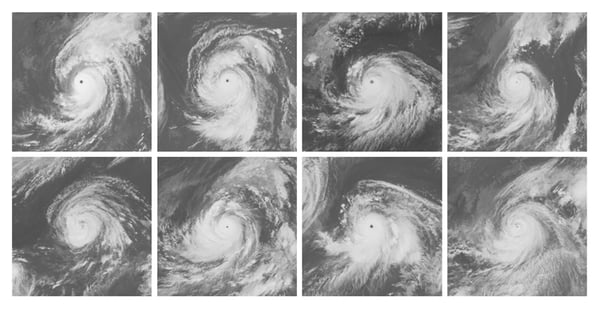2025-07-10 東京大学

新・台風災害リスクランキングで第一位グループにランクインした8つの台風
(気象衛星ひまわりの衛星画像をデジタル台風データアーカイブから取得して作成)
<関連情報>
- https://www.t.u-tokyo.ac.jp/press/pr2025-07-10-002
- https://www.t.u-tokyo.ac.jp/hubfs/press-release/2025/0710/002/text.pdf
- https://journals.ametsoc.org/view/journals/bams/106/7/BAMS-D-24-0137.1.xml
歴史的熱帯低気圧の多次元リスクランキング Multidimensional Risk Ranking of Historical Tropical Cyclones
Md. Rezuanul Islam and Yohei Sawada
Bulletin of the American Meteorological Society Published:08 Jul 2025
DOI:https://doi.org/10.1175/BAMS-D-24-0137.1
Abstract
Understanding tropical cyclone (TC) risk is crucial for societal resilience and aligns with the United Nations Sustainable Development Goals. Although analyzing and ranking historical TCs help assess their associated risk, an optimal method to combine multiple risk factors into a single measure is still unclear. This makes it challenging for disaster risk practitioners to objectively assess the overall risk from historical TCs. We address this gap by employing Pareto optimality—a novel approach to objectively evaluate and rank the meteorological, hazard, and impact aspects of historical TCs in Japan from 1979 to 2019. Our findings demonstrate that Pareto-based ranking effectively identifies TCs that reflect complex and balanced trade-offs across competing risk metrics, preventing any single factor from dominating and providing a comprehensive view of overall risk. For example, the top three financially damaging TCs—Hagibis (2019), Bess (1982), and Mireille (1991)—are ranked alongside Tip (1979), Judy (1982), Bart (1999), Chaba (2004), and Tokage (2004) as the most impactful. Notably, Tip, Chaba, and Tokage do not appear among the top ten financially damaging TCs; however, they consistently rank high across multiple impact metrics, including fatalities, injuries, inundations, and house destructions. Similarly, ranking based on meteorological and multihazard intensity places TCs such as Songda (2004), Tokage (2004), and Nabi (2005) in the higher-ranked cluster due to their combined potential for wind and rainfall hazards—factors that could be overlooked if the focus is solely on meteorological intensity. We also highlight Kanto and Tokai regions as economic vulnerability hotspots, while Kinki, Kyushu, and Hokuriku regions are more affected by fatalities, injuries, and house destructions, underscoring the varied regional TC risk. The multidimensional ranking approach in this study addresses the complex nature of TC risk in Japan and offers a framework that can be adapted and applied to other vulnerable regions worldwide.



